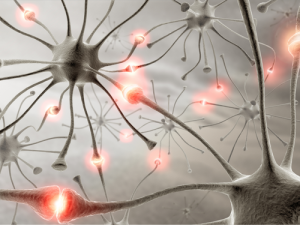about neuropathy
Peripheral neuropathy describes damage to the peripheral nerves, the vast communications network that transmits information from the brain and spinal cord to every other part of the body. It may be caused by diseases of the nerves or as the result of systemic illnesses. Many neuropathies have well-defined causes such as diabetes, uremia, AIDs, or nutritional deficiencies. In fact, diabetes is one of the most common causes of peripheral neuropathy.
Other causes include mechanical pressure such as compression or entrapment, direct trauma, penetrating injuries, contusions, fracture or dislocated bones; pressure involving the superficial nerves (ulna, radial, or peroneal) which can result from prolonged use of crutches or staying in one position for too long, or from a tumor; intraneural hemorrhage; exposure to cold or radiation or, rarely, certain medicines or toxic substances; and vascular or collagen disorders such as atherosclerosis, systemic lupus erythematosus, scleroderma, sarcoidosis, rheumatoid arthritis, and polyarteritis nodosa.
A common example of entrapment neuropathy is carpal tunnel syndrome, which has become more common because of the increasing use of computers. Although the causes of peripheral neuropathy are diverse, they produce common symptoms including weakness, numbness, paresthesia (abnormal sensations such as burning, tickling, pricking or tingling) and pain in the arms, hands, legs and/or feet.A large number of cases are of unknown cause.
Therapy for peripheral neuropathy differs depending on the cause. For example, therapy for peripheral neuropathy caused by diabetes involves control of the diabetes. In cases where a tumor or ruptured disc is the cause, therapy may include surgery to remove the tumor or to repair the ruptured disc.
In entrapment or compression neuropathy treatment may consist of splinting or surgical decompression of the ulnar or median nerves. Peroneal and radial compression neuropathies may require avoidance of pressure. Physical therapy and/or splints may be useful in preventing contractures (a condition in which shortened muscles around joints cause abnormal and sometimes painful positioning of the joints). What is the prognosis? Recovery from peripheral neuropathy is usually slow. Depending on the type of peripheral neuropathy, the patient may fully recover without residual effects or may partially recover and have sensory, motor, and vasomotor (blood vessel) deficits. If severely affected, the patient may develop chronic muscular atrophy.
Join the Neuropathy Association to receive their newsletter
and read encouraging stories of other patients
experiences as well as treatment informaiton and
the latest research.
national institute of neurological disorders
american chronic pain association
national association of chronic pain outreach association
patient advocacy network

